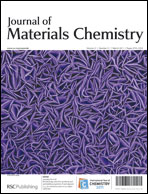Using density functional theory, we investigated the position preference and diffusion mechanisms of interstitial oxygen ions in lanthanum silicate La9.33Si6O26, which is an apatite-structured oxide and a promising candidate electrolyte material for solid oxide fuel cells. The reported lanthanum vacancies were explicitly taken into account by theoretically determining their arrangement with a supercell model. The most stable structures and the formation energies of oxygen interstitials were determined for each charged state. It was found that the double-negatively charged state is stable over a wide range of the Fermi level, and that the excess oxygen ions form split interstitials with the original oxygen ions, while the neutral and the single-negatively charged states preferably form molecular oxygen. These species were found near the lanthanum vacancy site. The theoretically determined migration pathway along the c-axis essentially follows an interstitialcy mechanism. The obtained migration barrier is sensitive to the charge state, and is also affected by the lanthanum vacancy. The barrier height of the double-negatively charged state was calculated to be 0.58 eV for the model structure, which is consistent with the measured activation energy.

You have access to this article
 Please wait while we load your content...
Something went wrong. Try again?
Please wait while we load your content...
Something went wrong. Try again?


 Please wait while we load your content...
Please wait while we load your content...